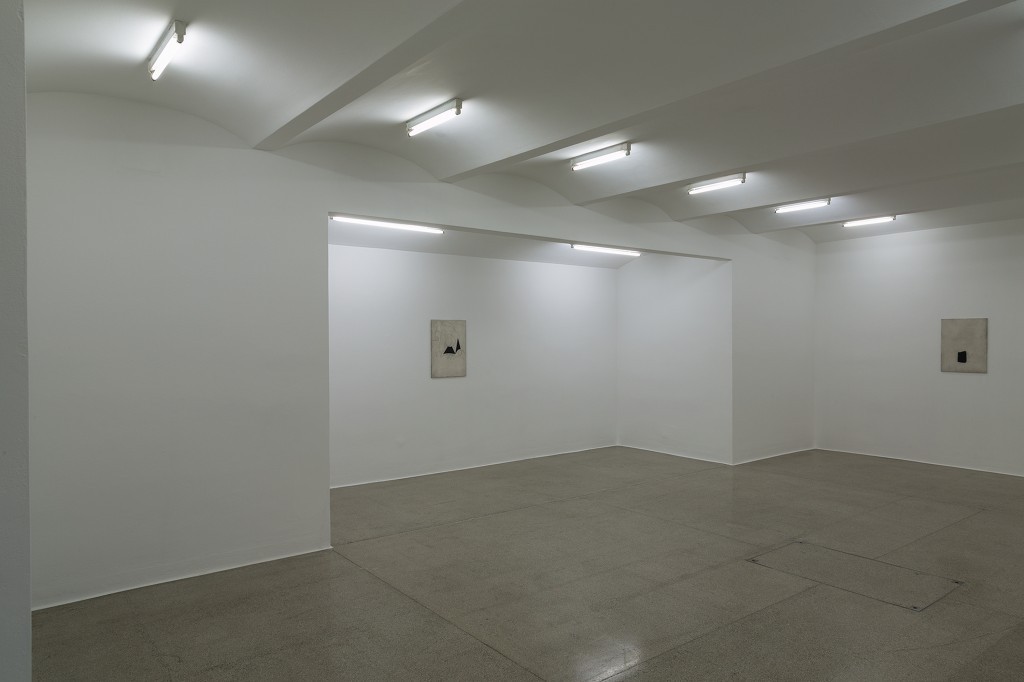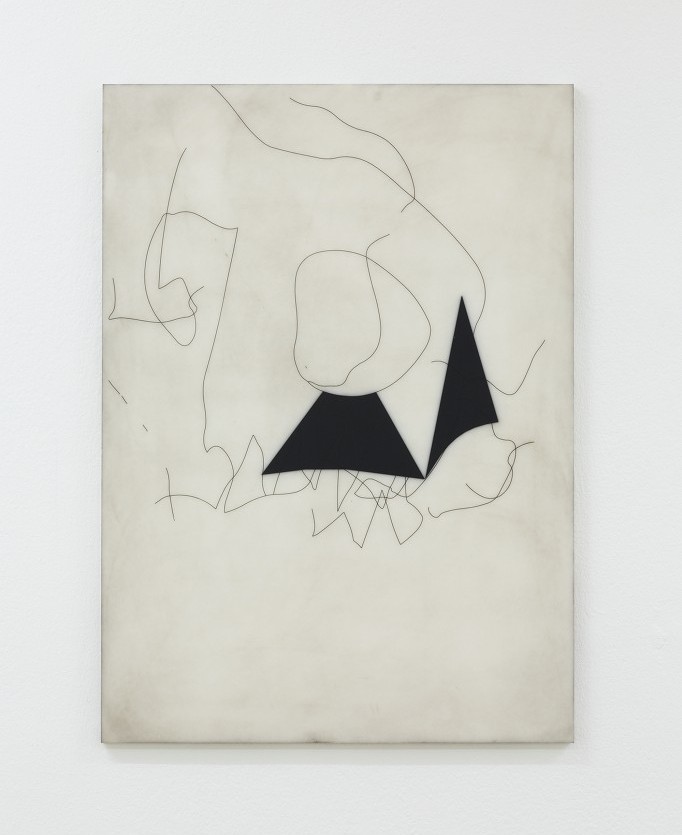Julia Haller
Smile from the Streets You Hold
20 Nov 2015 - 31 Jan 2016
JULIA HALLER
Smile from the Streets You Hold
20 November 2015 – 31 January 2016
Curated by Jeanette Pacher
Julia Haller engages with conventions and the history of painting, trying to leave it behind in her own work.
Her exhibition Phtata at Cologne’s Reisebürogalerie in 2012 presented canvases strangely distorted as though the fabric were stretched too tightly. Bulking out from the wall, they took on an object-like character, defying the flatness that defines painting as a medium. Working with thin translucent paints on primed canvases, Haller, who studied textual sculpture with Heimo Zobernig at the Academy of Fine Arts Vienna, had painted ornamental patterns based on elemental geometric shapes or fields that stood out from the backdrop.
The artist’s repertoire of materials ranges from bone and rabbit-skin glues across shellac, acrylic paints, and gouaches to iron-oxide pigment. In a series of small-format untitled works (2014) that were on view in the exhibition Passion at Galerie Christian Andersen and other venues, canvas painted with a deep black iron oxide is set behind glass to produce a strongly reflective and iridescent violet-blue surface in which fields and lines only gradually reveal themselves—almost as though they did not want to be discovered.
Two concurrent exhibitions Haller presented in Vienna in 2014—one at Galerie Meyer Kainer’s Boltenstern-Raum, the other at Diana Lambert—featured another untitled ensemble of works: a series of drawings transferred onto mineral composite panels, where they emerged as engraved lines filled with color. The show at Boltenstern-Raum consisted of the pictures the artist had drawn with her right hand; the left-handed “matches” were on view at Diana Lambert, their absence from the former exhibition marked by blank spaces on the wall between the pictures.
For her first institutional solo exhibition in Austria, Julia Haller has produced a new series of graphic works on mineral composite boards, whose surfaces she treats by milling, applying pigments, and other techniques. The artist’s interest in creating a situation in which works of art can be perceived both as self-sufficient and as mutually complementary—in which the display is more than the sum of its parts—is accommodated by the presentation of her works in different rooms at the Secession. Subtle interventions further manipulate the visitor’s perception of the rooms in which the works are on view.
Julia Haller, born in Frankfurt/Main in 1978, lives and works in Berlin and Vienna.
Invited by the board of the Secession
Smile from the Streets You Hold
20 November 2015 – 31 January 2016
Curated by Jeanette Pacher
Julia Haller engages with conventions and the history of painting, trying to leave it behind in her own work.
Her exhibition Phtata at Cologne’s Reisebürogalerie in 2012 presented canvases strangely distorted as though the fabric were stretched too tightly. Bulking out from the wall, they took on an object-like character, defying the flatness that defines painting as a medium. Working with thin translucent paints on primed canvases, Haller, who studied textual sculpture with Heimo Zobernig at the Academy of Fine Arts Vienna, had painted ornamental patterns based on elemental geometric shapes or fields that stood out from the backdrop.
The artist’s repertoire of materials ranges from bone and rabbit-skin glues across shellac, acrylic paints, and gouaches to iron-oxide pigment. In a series of small-format untitled works (2014) that were on view in the exhibition Passion at Galerie Christian Andersen and other venues, canvas painted with a deep black iron oxide is set behind glass to produce a strongly reflective and iridescent violet-blue surface in which fields and lines only gradually reveal themselves—almost as though they did not want to be discovered.
Two concurrent exhibitions Haller presented in Vienna in 2014—one at Galerie Meyer Kainer’s Boltenstern-Raum, the other at Diana Lambert—featured another untitled ensemble of works: a series of drawings transferred onto mineral composite panels, where they emerged as engraved lines filled with color. The show at Boltenstern-Raum consisted of the pictures the artist had drawn with her right hand; the left-handed “matches” were on view at Diana Lambert, their absence from the former exhibition marked by blank spaces on the wall between the pictures.
For her first institutional solo exhibition in Austria, Julia Haller has produced a new series of graphic works on mineral composite boards, whose surfaces she treats by milling, applying pigments, and other techniques. The artist’s interest in creating a situation in which works of art can be perceived both as self-sufficient and as mutually complementary—in which the display is more than the sum of its parts—is accommodated by the presentation of her works in different rooms at the Secession. Subtle interventions further manipulate the visitor’s perception of the rooms in which the works are on view.
Julia Haller, born in Frankfurt/Main in 1978, lives and works in Berlin and Vienna.
Invited by the board of the Secession


